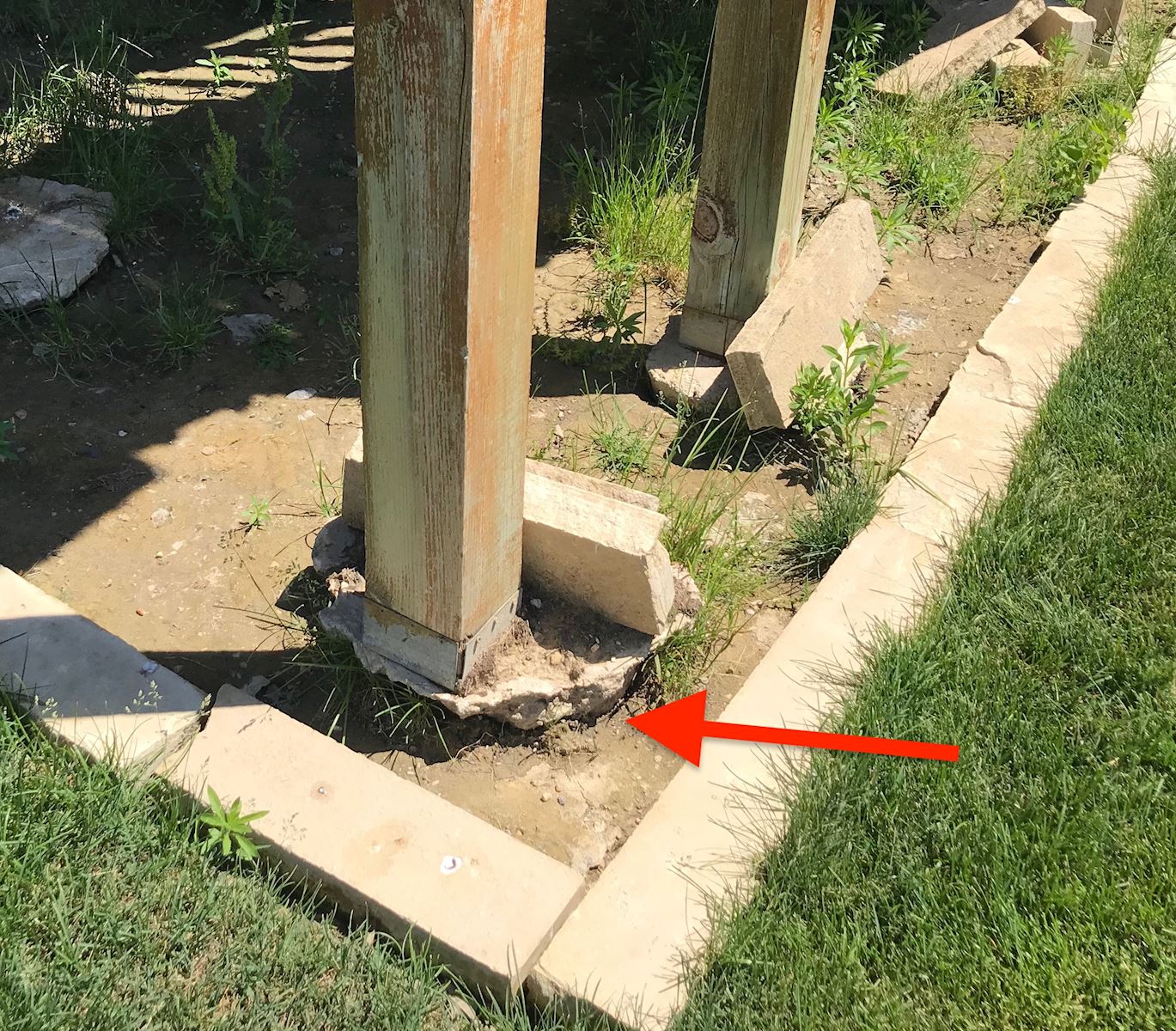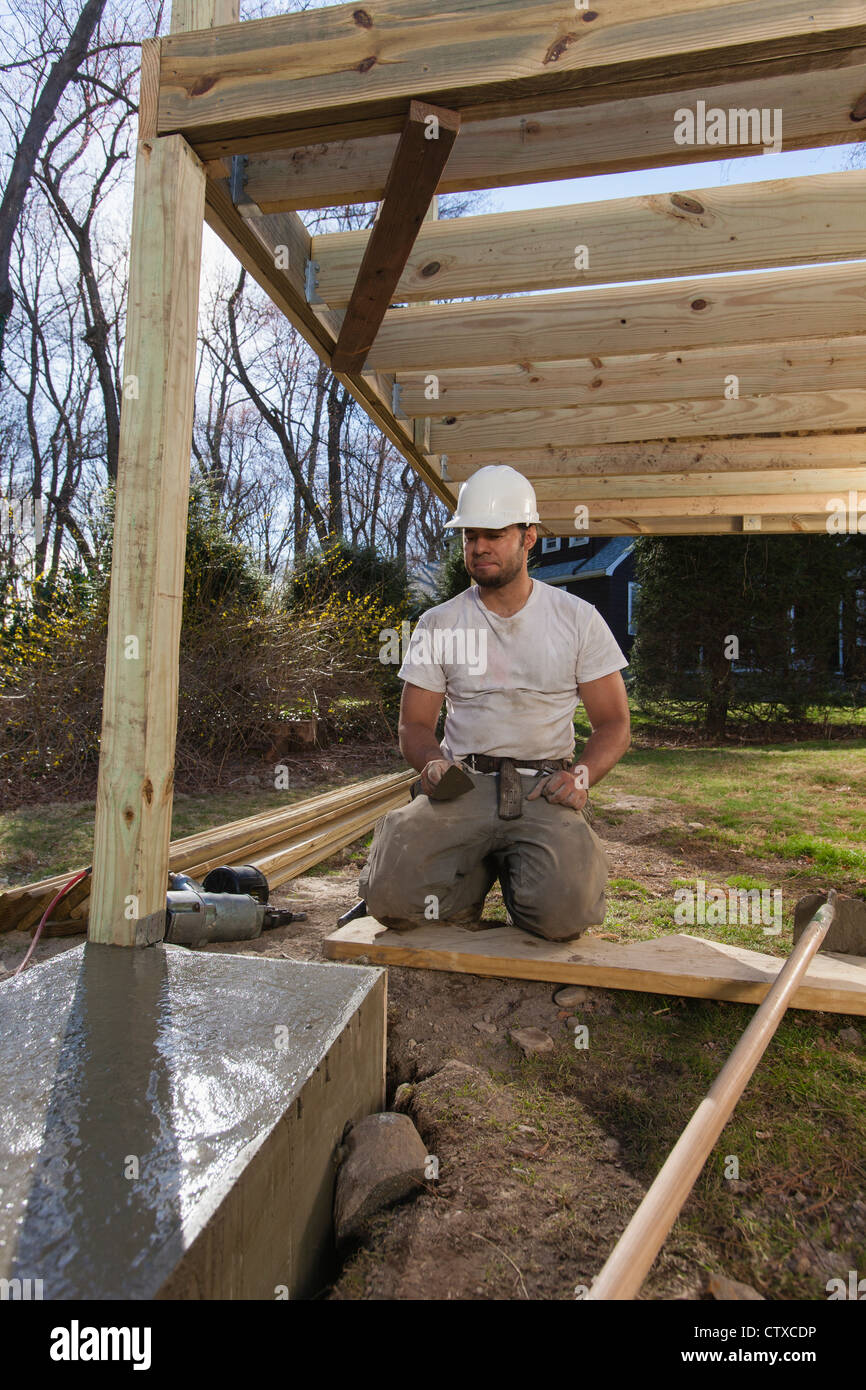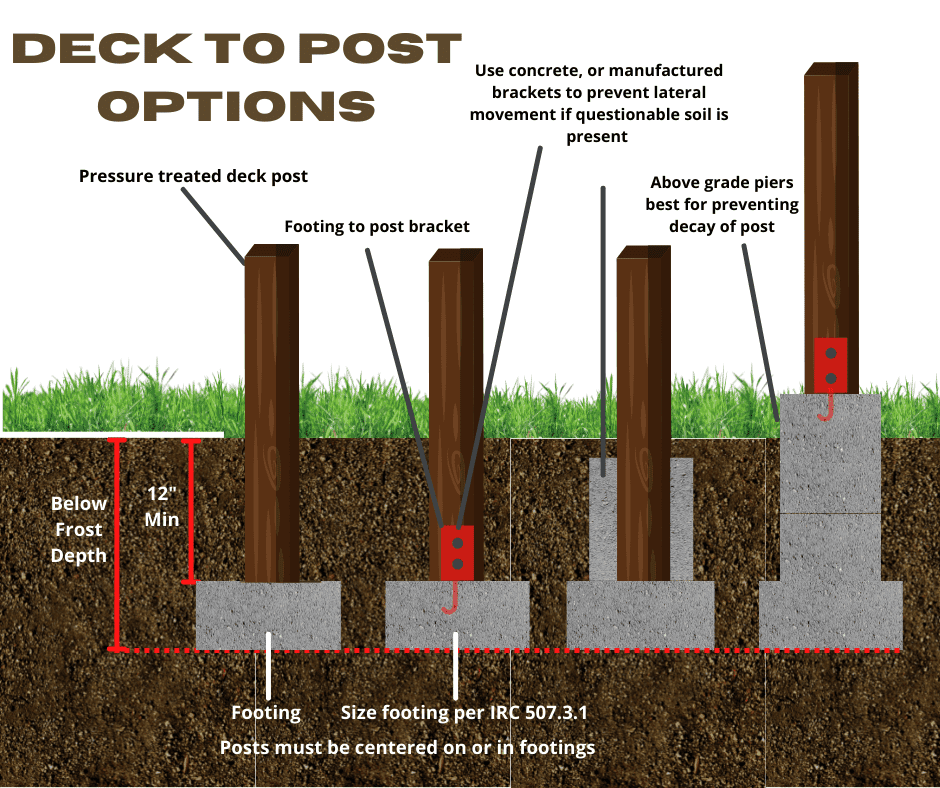A Solid Structure for Your Oasis: Checking Out the Relevance of Deck Footings in Outdoor Structures
A Solid Structure for Your Oasis: Checking Out the Relevance of Deck Footings in Outdoor Structures
Blog Article
Specialist Tips for Installing Deck Footings to Assistance Your Outdoor Space
When it comes to constructing a deck, one of the most vital aspects to consider is the installation of proper footings. These grounds are the structure upon which your outside space will relax, providing security and assistance for years to come. What specifically does it take to set up deck footings properly?
Importance of Appropriate Deck Grounds
Appropriate deck grounds are vital for ensuring the stability and durability of your outdoor area. When creating a deck, it is important to take note of the structure on which it will certainly relax. Deck grounds give the needed support for the entire framework and assistance distribute the weight equally - Deck Footings. Without solid and appropriately set up footings, your deck might end up being unstable, bring about security hazards and pricey repair services.

Along with security, appropriate deck footings additionally add to the durability of your outdoor room (Deck Footings). Grounds that are developed and constructed to endure the aspects and soil problems in your location will assist stop the deck from moving or clearing up in time. By guaranteeing the grounds are properly sized and mounted, you can lessen the danger of damage to the deck framework, prolonging its lifespan and reducing the demand for pricey fixings or replacements

Choosing the Right Kind Of Grounds
When choosing the ideal sort of grounds for your deck, it is essential to consider factors such as soil conditions, regional building ordinance, and the general design of your outdoor space. The kind of footing you pick will play a vital function in guaranteeing the stability and longevity of your deck.
One typical kind of ground is the concrete ground. Concrete grounds appropriate for many soil conditions and supply superb support for decks. They are usually mounted listed below the frost line to stop shifting and working out because of cold and thawing cycles. An additional option is helical piers, which are optimal for locations with unstable soil or high water tables. These piers are screwed into the ground and offer solid assistance for the deck.
In many cases, you may need to utilize specific footings, such as pile footings or deep foundations, if you are building a huge or multi-level deck. These grounds are created to distribute the weight of the deck over a larger location, making certain security and protecting against sinking or working out.
Before choosing a kind of ground, it is important to get in touch with neighborhood building ordinance and policies to guarantee compliance. In addition, take into consideration the style and meant use your outside space. Factors such as the size, form, and load-bearing requirements of your deck will certainly influence the type of footing that is most ideal.
Preparing the Ground for Footing Setup
To correctly prepare the ground for footing installment, it is essential to evaluate the dirt conditions and take necessary actions to make sure stability and resilience of the deck. The very first step is to excavate the area where the grounds will be mounted. The depth of the excavation will rely on the frost line in your region and the details demands of the deck design. It is vital to eliminate any kind of plants, rocks, or particles from the excavation to make sure a solid structure.
As soon as the area has actually been excavated, the following see page action is to small the dirt. This can be done using a plate compactor or by utilizing a hand meddle. Compacting the soil assists to remove any spaces or air pockets, which can cause settling and instability in time.
After condensing the dirt, it is important to lay a layer of gravel or smashed rock at the bottom of the excavation. This will certainly provide drain and aid to protect against water from pooling around the grounds, which can lead to disintegration and instability.
Step-by-Step Overview to Installing Deck Footings
After properly preparing the ground for footing setup, the next step is to begin the procedure of setting up deck grounds. This step-by-step guide will provide you with a clear understanding of how to install deck footings for your outside area.
Establish the area: Beginning by noting the positions of the deck footings using stakes and string. Make sure that the areas straighten with the design and layout of your deck.
Dig the openings: Make use of an article hole digger or an auger to dig the openings for the grounds. The look at this web-site depth and size of the openings should be in conformity with neighborhood building codes and the particular demands of your deck style.
Degree the openings: Make use of a degree to make sure that the openings are dug to the correct depth and are degree with each various other. (Deck Footings)
Add crushed rock: Place a layer of gravel at the base of each opening to enhance water drainage and stop the timber from decaying.
Place the grounds: Position the footings right into the holes, ensuring they are degree and plumb. Make use of a level and a gauging tape to guarantee precision.
Secure the footings: Pour concrete right into the openings around the grounds, loading them to the top. Utilize an article degree to make certain the footings remain level as the concrete sets.
Enable time for curing: Allow the concrete cure according to the producer's guidelines prior to continuing with the deck building.
Usual Errors to Avoid Throughout Footing Installation
One vital aspect to consider throughout the installation of deck grounds is avoiding typical mistakes that can endanger the stability and long life of your outside room. While deck grounds may look like a simple and simple component of the building process, overlooking particular variables can cause pricey repair work and possible security hazards down the line.

Furthermore, disregarding to set up proper drain measures can trigger water to gather around the footings, leading to rot, decay, and the ultimate weakening of the deck's foundation. Furthermore, making use of the wrong sort of footing product or failing to appropriately protect the grounds can compromise their architectural integrity.
To avoid these blunders, it is important to talk to a professional Visit Your URL or comply with sector guidelines to guarantee appropriate ground installment. By doing so, you can ensure the security and long life of your outside space, offering a secure and pleasurable setting for years to come.
Final Thought
In verdict, setting up correct deck grounds is essential for the security and long life of your exterior area. By choosing the ideal sort of grounds and properly preparing the ground, you can make sure a solid foundation for your deck. Adhering to a detailed overview and staying clear of usual mistakes during footing setup will even more improve the durability and safety and security of your deck.
Correct deck footings are necessary for ensuring the security and longevity of your outside space. The grounds offer as a connection between the deck and the ground, permitting the weight of the deck and its owners to be distributed uniformly into the dirt.One typical type of footing is the concrete ground. Put the grounds: Position the grounds into the holes, making sure they are level and plumb. Secure the grounds: Put concrete into the holes around the footings, loading them to the top.
Report this page